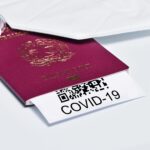As the year progresses, prospective young workers and professionals from around the globe are keenly watching the final invitation rounds for one of Canada’s most popular immigration pathways: International Experience Canada (IEC). This landmark program offers a unique, streamlined opportunity for youth from partner countries to gain invaluable Canadian work experience without the need for a complex Labour Market Impact Assessment (LMIA). For many, this represents a pivotal first step towards a potential future in Canada, making these last draws of the year critically important. Understanding the nuances of the IEC program, its distinct streams, and the strategic application process is paramount for anyone hoping to secure a spot before the annual quotas are met.
Table of Contents
- Decoding the International Experience Canada (IEC) Program: A Vital Gateway for Global Youth
- The Three Essential Streams of IEC: Tailoring Your Canadian Work Adventure
- Crucial Eligibility Checklist: Are You a Prime Candidate for an IEC Work Permit?
- Navigating the IEC Application Labyrinth: A Step-by-Step Strategic Guide
- Beyond the IEC Work Permit: Pioneering Your Path to Canadian Permanent Residency
- Frequently Asked Questions about International Experience Canada (IEC)
Decoding the International Experience Canada (IEC) Program: A Vital Gateway for Global Youth
The International Experience Canada (IEC) program stands as a cornerstone of Canada’s temporary foreign worker policy, specifically designed to foster cultural exchange and strengthen ties with partner nations. At its core, IEC operates through bilateral agreements between Canada and over 30 countries, creating reciprocal opportunities for young citizens to live, travel, and work abroad. This program is exceptionally popular because most of its participants receive an LMIA-exempt work permit. An LMIA is typically a document an employer needs to obtain to prove that hiring a foreign worker will not have a negative impact on the Canadian labour market. Bypassing this requirement significantly simplifies the process for both the applicant and, in some cases, the employer. The program is more than just a work permit; it’s a comprehensive cultural experience that allows participants to immerse themselves in Canadian society, enhance their language skills, and build an international professional network. Each year, Immigration, Refugees and Citizenship Canada (IRCC) allocates a specific number of spots, or quotas, for each participating country, making the application process competitive and time-sensitive, especially as the year-end approaches.
The overarching goal of IEC is to provide youth with the chance to broaden their personal and professional horizons. For Canada, it’s an opportunity to attract energetic, skilled, and adaptable young individuals who contribute to the economy and enrich the cultural fabric of communities across the country. Many IEC participants fill seasonal or in-demand jobs, particularly in the tourism and hospitality sectors, while others in the Young Professionals stream bring specialized skills to Canadian companies. This symbiotic relationship has made IEC a resounding success, with tens of thousands of participants arriving in Canada annually. As these final invitation rounds for the year take place, it marks the culmination of the annual cycle and the last opportunity for candidates in the pool to receive that coveted Invitation to Apply (ITA).
The Three Essential Streams of IEC: Tailoring Your Canadian Work Adventure
The International Experience Canada program is not a one-size-fits-all pathway. It is intelligently structured into three distinct streams, each designed to cater to different goals and circumstances. Choosing the correct stream is a critical first step in the journey. The most well-known stream is the Working Holiday. This category is ideal for individuals who want the ultimate flexibility to explore Canada. Participants receive an open work permit, which is not tied to a specific employer. This allows them to work for almost any employer anywhere in Canada, change jobs as they please, and travel extensively. It’s the perfect option for those who wish to fund their travels by working in various short-term or seasonal roles, from ski resorts in Whistler to cafes in Montreal. The freedom of an open work permit is its greatest asset, providing a true taste of Canadian life and work culture without long-term commitments.
The second stream is the Young Professionals category. This is an employer-specific work permit program tailored for individuals who have a valid job offer in Canada that contributes to their professional development. The job must be classified under a National Occupational Classification (NOC) Training, Education, Experience and Responsibilities (TEER) category of 0, 1, 2, or 3. This stream is designed to help participants gain targeted professional experience in their field. Unlike the Working Holiday permit, the Young Professionals work permit restricts the holder to working for the employer named on the permit. This is an excellent pathway for recent graduates or young professionals looking to advance their careers with international experience. The final stream is the International Co-op (Internship). This is also an employer-specific permit, but it is exclusively for students registered at a post-secondary institution in their home country. They must have a job offer for a work placement or internship in Canada that is required to complete their academic curriculum. This stream provides an invaluable opportunity to apply classroom knowledge in a real-world Canadian work environment, fulfilling academic requirements while gaining a competitive edge in the global job market.
Crucial Eligibility Checklist: Are You a Prime Candidate for an IEC Work Permit?
Before an aspiring candidate can even enter an IEC pool, they must meet a series of fundamental eligibility requirements. These criteria ensure that the program’s integrity is maintained and that participants are well-prepared for their time in Canada. The most important requirement is citizenship. The applicant must be a citizen of one of the countries that has a bilateral youth mobility agreement with Canada. Additionally, they must possess a valid passport for the entire duration of their intended stay. Age is another critical factor, with the general requirement being between 18 and 30 or 35 years old, inclusive, at the time of application. The specific age limit can vary depending on the applicant’s country of citizenship, so it is crucial to verify the age range stipulated in the agreement for one’s specific nationality. For example, citizens from Australia, Ireland, and Italy can apply up to the age of 35, while most other partner countries have a cutoff at age 30.
Financial stability is a non-negotiable prerequisite. Applicants must demonstrate that they have the financial resources to support themselves upon arrival in Canada. Beyond these primary criteria, there are several other key requirements that all applicants must fulfill. Meeting these standards is essential for a successful application and a smooth entry into Canada.
Key IEC Eligibility Requirements at a Glance
- Proof of Funds: Applicants must prove they have at least CAD $2,500 to cover initial living expenses. Health Insurance: Comprehensive health insurance is mandatory for the entire duration of the stay. Proof of this insurance must be presented upon arrival at the port of entry. Failure to have adequate insurance can result in a work permit being issued for a shorter duration or even refusal of entry. Admissibility: Like all visitors to Canada, IEC applicants must be admissible to the country. This means they must not have any serious criminal records or health issues that would pose a risk to Canadians. Travel Ticket: Applicants must have a round-trip ticket before departure or demonstrate they have sufficient funds to purchase a departure ticket at the end of their authorized stay. No Dependents: IEC applicants cannot include dependents in their application. Accompanying family members must apply for their own status in Canada.
Navigating the IEC Application Labyrinth: A Step-by-Step Strategic Guide
The IEC application process is managed through a pool system, which is fundamentally a lottery. It begins with the candidate completing an online questionnaire on the IRCC website to determine their preliminary eligibility. If they appear to be eligible, they will receive a personal reference code, which is used to create a secure IRCC online account. Within this account, the next step is to build and submit an IEC profile. This profile is not the work permit application itself; rather, it is an expression of interest that places the candidate into one or more pools corresponding to their country of citizenship and the stream(s) they are eligible for (Working Holiday, Young Professionals, etc.). It is crucial to ensure all information in the profile is accurate and complete, as any discrepancies can lead to refusal later on.
Once the profile is submitted, the candidate enters a waiting game. IRCC conducts regular rounds of invitations, randomly selecting candidates from each pool to issue an Invitation to Apply (ITA). The frequency and size of these draws depend on the available quotas for each country. Upon receiving an ITA, the clock starts ticking. The candidate typically has 10 days to accept the invitation and then another 20 days to submit the complete work permit application, including all supporting documents and fees. This is a strict deadline, so it is highly advisable to gather all necessary documents—such as police certificates, medical exams (if required), and a detailed resume—in advance while waiting in the pool. After the application is submitted, an IRCC officer will assess it. If approved, the applicant receives a Port of Entry (POE) Letter of Introduction. This letter is not the work permit itself but is the official document presented to a border services officer upon arrival in Canada to have the actual work permit issued.
Beyond the IEC Work Permit: Pioneering Your Path to Canadian Permanent Residency
While the International Experience Canada program is designed as a temporary work and travel opportunity, for many participants, it serves as a strategic launchpad for permanent immigration to Canada. The Canadian work experience gained through an IEC permit is immensely valuable in Canada’s economic immigration systems, most notably through the Express Entry system. Express Entry manages applications for three main programs: the Federal Skilled Worker Program (FSWP), the Federal Skilled Trades Program (FSTP), and the Canadian Experience Class (CEC). The CEC is particularly relevant for IEC alumni. To be eligible for the CEC, a candidate must have at least one year of full-time (or equivalent part-time) skilled work experience in Canada within the last three years. The work experience gained under an IEC permit, provided it is in a NOC TEER 0, 1, 2, or 3 occupation, can fulfill this core requirement.
This Canadian experience significantly boosts a candidate’s Comprehensive Ranking System (CRS) score within the Express Entry pool. The CRS is a points-based system used to rank candidates against one another. Points are awarded for factors like age, education, language proficiency, and work experience. Canadian work experience is one of the most heavily weighted factors, giving former IEC participants a distinct competitive advantage. A higher CRS score increases the likelihood of receiving an Invitation to Apply for permanent residence. Furthermore, some Provincial Nominee Programs (PNPs) have streams that specifically target individuals with work experience in their province, opening up even more avenues for IEC participants to transition from temporary to permanent status. Therefore, an IEC work permit is not just a temporary visa; it is a critical investment in a long-term future in Canada.
Frequently Asked Questions about International Experience Canada (IEC)
What is the main difference between a Working Holiday and a Young Professionals work permit?
The main difference lies in the type of work permit issued. The Working Holiday stream provides an open work permit, allowing you to work for almost any employer in Canada. The Young Professionals stream provides an employer-specific work permit, meaning you must work for the employer listed on your permit, and the job must contribute to your professional development.
How much money do I need for the International Experience Canada program?
You must prove that you have at least CAD $2,500 to cover your initial expenses upon arrival in Canada. Additionally, you need to have a round-trip ticket or enough funds to purchase a departure ticket for the end of your stay.
What does it mean for an IEC work permit to be LMIA-exempt?
LMIA-exempt means that your potential employer does not need to obtain a Labour Market Impact Assessment (LMIA). An LMIA is a document that proves there is a need for a foreign worker to fill a job and that no Canadian worker is available. Bypassing this step makes the hiring process much simpler and faster for both you and your employer.
Can I apply for permanent residence after my IEC work permit expires?
Yes, gaining at least one year of skilled work experience in Canada on your IEC permit can make you eligible for the Canadian Experience Class (CEC) program under Express Entry. This Canadian experience significantly increases your points and chances of being invited to apply for permanent residence.
Talk to us to find out more. ->
The content above is not intended to provide legal advice or opinions of any kind and may not be used for professional or commercial purposes.







